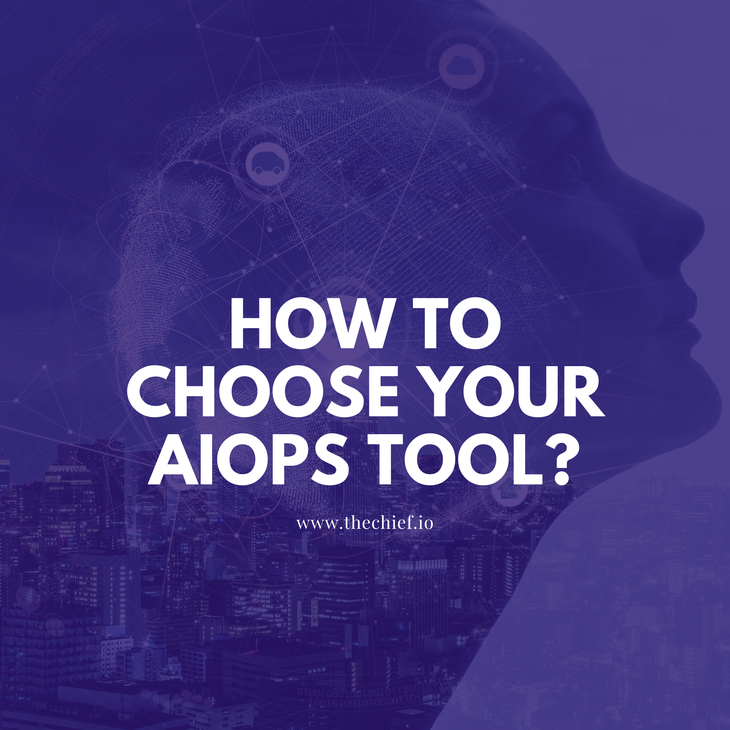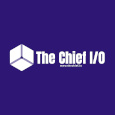How to choose your AIOps tool?
in AIOps , Machine Learning

AIOps platforms have been increasingly becoming popular these days. There are so many AIOps tools available in the market that choosing the right one may be overwhelming. You may be tempted to use AIOps but do not want to risk wasting time and money by making the wrong choice.
Are you confused about the right AIOps tool? Let us help you out.
Here is a look at the top 5 AIOps platforms, according to Gartner Inc., the global research and advisory firm. Read on to know what users liked about these AIOps platforms, and more importantly, what they did not like. We hope this will help you select your AIOps platform.
What is AIOps?
AIOps apply a combination of machine learning and data science to IT operations problems. The platforms use ML functionality and big data to improve and partially replace all primary IT operations functions. This includes event correlation and analysis, availability and performance monitoring, and IT service automation and management.
Simply put, AIOps use Artificial Intelligence to make managing IT operations simpler.
AIOps accelerate and automate problem resolution in modern, complex IT environments. AIOps platforms use and analyze the increasing volume, variety, and speed of data generated by IT and present it in a useful manner.
How is AIOps used?
AIOps is typically used in large, complex enterprises or in companies that use DevOps or cloud computing.
AIOps platforms use data from various sources. It then uses entropy algorithms to remove irrelevant data and duplication and select only the relevant ones. Filtering the data greatly cuts down the number of alerts that Ops teams have to deal with.
The AIOps platform then groups the data and correlates information. It looks for data patterns and identifies the causes and events.
The platform sends the results of that analysis to everyone involved. The concerned people can then quickly fix the issue and choose automatic responses for a precise and swift resolution of the incident.
Why is AIOps used?
AIOps helps automate standard tasks so that Ops professionals can focus on the important and high-priority issues at hand. It helps them avoid wasting time on irrelevant IT data.
AIOps facilitates remote collaboration with streamlined incident management. It also speeds up the process of detecting and resolving issues. It has become the backbone of virtual network operation centers (NOCs), where Ops teams working remotely can collaborate and communicate effectively.
AIOps optimizes the workflow of problem-resolution so that IT problems can be resolved faster, accurately, and with lesser manual intervention. AIOps does the time-consuming tasks of ingesting, analyzing, and correlating alerts. It also identifies the root causes so that Ops professionals can use their time in performing critical tasks.
Top 5 AIOps tools
Now that you have a brief understanding of AIOps, here are the top 5 AIOps tools for you.
1. Dynatrace
Dynatrace helps monitor, optimize, and scale every app in any cloud environment. It simplifies cloud complexity and quickens digital transformation. It offers AI, advanced observability, and complete automation. It provides answers and data about the performance of applications, infrastructure, and user experience.
What users like?
Most Dynatrace users unanimously agreed it is one of the best tools to monitor your apps. It also helps in diagnosing performance issues by providing a clear analysis of every error, including root cause analysis and a proper error statement. Users also felt that it was quite easy to install and configure.
What users disliked?
Common feedback was that the tool sent out alerts a little late. Users felt that a notification alarm would be helpful, especially in cases of critical alerts. The dashboard and the reports can be simplified. Users felt that the graphics and reports were a bit difficult to understand.
2. Splunk Enterprise
Splunk Enterprise allows you to search, analyze, and visualize the data gathered from the components of your IT infrastructure or business. It leverages AI and ML for predictive and proactive business decisions.
What users liked?
Splunk Enterprise, as per users, offered real-time visibility with advanced dashboards. It also has a flexible GUI, advanced filtering, and AI & ML for threat prediction. It is also easy to configure and use.
What users disliked?
With large chunks of data, the UI may get slow. Also, the query structure is complex, which needs to be simplified. The data cleaning process in Splunk has a very limited scope, and you cannot remove data only for a particular source type.
3. AppDynamics
AppDynamics is an app performance monitoring solution that uses ML and AI to provide real-time visibility and insight into IT environments. It detects issues with real-time monitoring before they impact customers and uses machine learning to accelerate and automate root-cause diagnosis.
What users liked?
According to users, AppDynamics provided complete visibility on the application's performance, database, and infrastructure performance. The GUI is simple to use and understand. It is also an easy platform to download and set up.
What users disliked?
There are a lot of tool features and it takes time for people to get used to them. The learning curve is steep and integration is complex. Documentation is complex and needs to be simplified.
4. Datadog
Datadog is a monitoring solution for cloud-scale applications. It provides monitoring of databases, servers, and services, through a SaaS-based data analytics platform. Datadog offers integration and automation of infrastructure monitoring. It also offers application performance monitoring, and log management to provide real-time visibility of the entire technology stack of clients.
What users liked?
Users felt that Datadog helped cover all their logging and monitoring needs with excellent integration abilities. They liked that it offered fast log searching and the creation of powerful search queries. Some users also liked that it allowed them to create graphs based on logs.
What users disliked?
It takes time to learn Datadog. Navigating the UI and figuring out possible queries takes time. The UI is not that easy to understand at first. Integrating it with too many apps can cause delays in the delivery of information.
5. Splunk Cloud
Splunk Cloud delivers Splunk Enterprise as a cloud service. It allows users to get answers from their machine data without the need to manage any infrastructure.
What users liked?
A common feedback among users was that Splunk helped them achieve monitoring at no additional infrastructure cost. They felt that searching logs became simpler. They also liked the fact that it came with other features like log review, pattern search, alerts, dashboard, and statistics.
What users disliked?
Certain features of the application take time to load when used online. It can be complicated
and has a steep learning curve. Users also felt that it was pricier than other tools.
Conclusion
Different users in different industries use AIOps tools. Hence, the understanding of the AIOps tools varies among users. Most users would have preferred a tool that was easier to use without the need for a lot of training. Software providers could use this feedback to ensure that the tools are simple enough for a wide range of users to use without compromising on the features.
If you are new at AIOps, among other features, consider the one that is simpler to learn and use. It is also wise to choose an AIOps tool that comes with up-to-date, easy to understand documentation, and helpful customer support.
References: This article is based on data fromG2 website and Gartnerblog post (getting started with AIOps)
Get similar stories in your inbox weekly, for free
Share this story:

The Chief I/O
The team behind this website. We help IT leaders, decision-makers and IT professionals understand topics like Distributed Computing, AIOps & Cloud Native
Latest stories
HIPAA and PCI DSS Hosting for SMBs: How to Choose the Right Provider
HIPAA protects patient data; PCI DSS protects payment data. Many small and mid-sized businesses now …
The Rise of GPUOps: Where Infrastructure Meets Thermodynamics
GPUs used to be a line item. Now they're the heartbeat of modern infrastructure.
Top Bare-Metal Hosting Providers in the USA
In a cloud-first world, certain workloads still require full control over hardware. High-performance computing, latency-sensitive …
Top 8 Cloud GPU Providers for AI and Machine Learning
As AI and machine learning workloads grow in complexity and scale, the need for powerful, …
How ManageEngine Applications Manager Can Help Overcome Challenges In Kubernetes Monitoring
We tested ManageEngine Applications Manager to monitor different Kubernetes clusters. This post shares our review …
AIOps with Site24x7: Maximizing Efficiency at an Affordable Cost
In this post we'll dive deep into integrating AIOps in your business suing Site24x7 to …
A Review of Zoho ManageEngine
Zoho Corp., formerly known as AdventNet Inc., has established itself as a major player in …
Should I learn Java in 2023? A Practical Guide
Java is one of the most widely used programming languages in the world. It has …
The fastest way to ramp up on DevOps
You probably have been thinking of moving to DevOps or learning DevOps as a beginner. …
Why You Need a Blockchain Node Provider
In this article, we briefly cover the concept of blockchain nodes provider and explain why …
Top 5 Virtual desktop Provides in 2022
Here are the top 5 virtual desktop providers who offer a range of benefits such …











